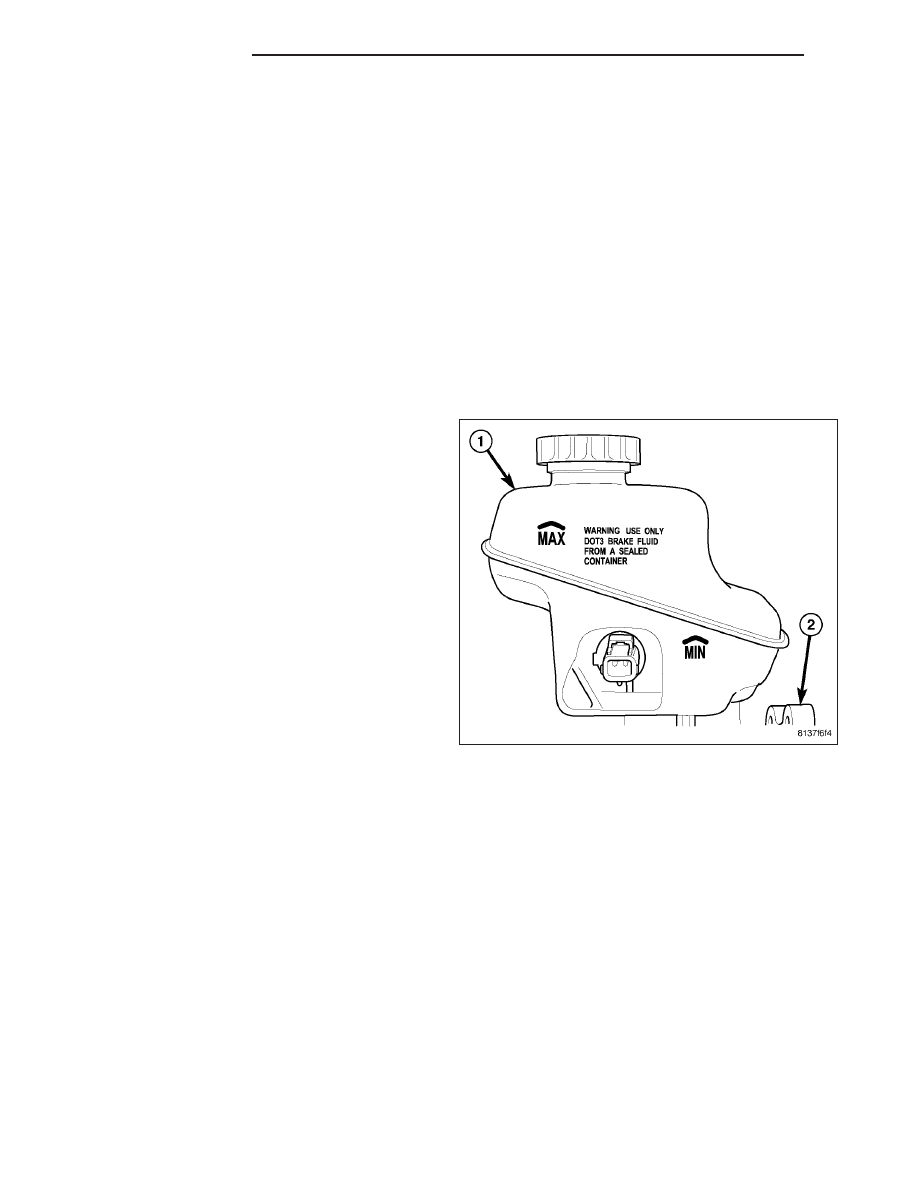Chrysler 300/300 Touring/300C, Dodge Magnum. Manual - part 158

FLUID
DIAGNOSIS AND TESTING
BRAKE FLUID CONTAMINATION
Indications of fluid contamination are swollen or deteriorated rubber parts.
Swollen rubber parts indicate the presence of petroleum in the brake fluid.
To test for contamination, put a small amount of drained brake fluid in clear glass jar. If fluid separates into layers,
there is mineral oil or other fluid contamination of the brake fluid.
If brake fluid is contaminated, drain and thoroughly flush system. Replace master cylinder, proportioning valve, cal-
iper seals, wheel cylinder seals, Antilock Brake hydraulic unit and all hydraulic fluid hoses.
STANDARD PROCEDURE
BRAKE FLUID LEVEL CHECKING
Check master cylinder reservoir fluid level a minimum
of twice annually.
Fluid reservoirs (1) are marked with the words MAX
and MIN to indicate proper brake fluid fill level of the
master cylinder.
If necessary, add brake fluid to bring the level to the
bottom of the MAX mark on the side of the master cyl-
inder fluid reservoir (1).
Use only Mopar
T
brake fluid or equivalent from a
sealed container. Brake fluid must conform to DOT 3
specifications (Refer to 5 - BRAKES/HYDRAULIC/ME-
CHANICAL/FLUID - SPECIFICATIONS).
DO NOT use brake fluid with a lower boiling point, as brake failure could result during prolonged hard braking.
Use only brake fluid that was stored in a tightly-sealed container.
DO NOT use petroleum-based fluid because seal damage will result. Petroleum based fluids would be items such
as engine oil, transmission fluid, power steering fluid etc.
SPECIFICATIONS
BRAKE FLUID
The brake fluid used in this vehicle must conform to DOT 3 specifications and SAE J1703 standards. No other type
of brake fluid is recommended or approved for usage in the vehicle brake system. Use only Mopar
T
Brake Fluid or
equivalent from a tightly sealed container.
CAUTION: Never use reclaimed brake fluid or fluid from an container which has been left open. An open
container of brake fluid will absorb moisture from the air and contaminate the fluid.
CAUTION: Never use any type of a petroleum-based fluid in the brake hydraulic system. Use of such type
fluids will result in seal damage of the vehicle brake hydraulic system causing a failure of the vehicle brake
system. Petroleum based fluids would be items such as engine oil, transmission fluid, power steering fluid,
etc.
5 - 74
BRAKES - BASE
LX